Preface
Overview
Audience
About the Author
Dedication
Prerequisites
Rumblings Of An Old Men
What Is Continuous Deployment?
Deploying Stateful Applications At Scale
Creating A Cluster
Using StatefulSets To Run Stateful Applications
Using Deployments To Run Stateful Applications At Scale
Using StatefulSets To Run Stateful Applications At Scale
Using Sidecar Containers To Initialize Applications
To StatefulSet Or Not To StatefulSet
What Now?
Enabling Process Communication With Kube API Through Service Accounts
Creating A Cluster
Configuring Jenkins Kubernetes Plugin
Exploring the default ServiceAccount
Creating ServiceAccounts
Configuring Jenkins Kubernetes Plugin With ServiceAccounts
Using ServiceAccounts From Side-Car Containers
What Now?
Defining Continuous Deployment
To Continuously Deliver Or To Continuously Deploy?
Defining Continuous Deployment Goals
Defining Continuous Deployment Steps
Creating A Cluster
Creating Namespaces Dedicated To Continuous Deployment Processes
Defining A Pod With The Tools
Executing Continuous Integration Inside Containers
Running Functional Tests
Creating Production Releases
Deploying To Production
Running Production Tests
Cleaning Up Pipeline Leftovers
Did We Do It?
What Now?
Packaging Kubernetes Applications
Creating A Cluster
What Is Helm?
Installing Helm
Installing Helm Charts
Customizing Helm Installations
Rolling Back Helm Revisions
Using YAML Values To Customize Helm Installations
Creating Helm Charts
Exploring Files That Constitute A Chart
Upgrading Charts
Helm vs. OpenShift Templates
What Now?
Distributing Kubernetes Applications
Creating A Cluster And Retrieving Its IP
Using ChartMuseum
Using Monocular
What Now?
Installing and Setting Up Jenkins
Creating A Cluster And Retrieving Its IP
Running Jenkins
Using Pods to Run Tools
Running Builds In Different Namespaces
Creating Nodes For Building Container Images
Testing Docker Builds Outside The Cluster
Automating Jenkins Installation And Setup
What Now?
Creating A Continuous Deployment Pipeline With Jenkins
Exploring The Continuous Deployment Process
Creating A Cluster
Installing Jenkins
Defining The Build Stage
Defining The Functional Testing Stage
Defining The Release Stage
Defining The Deploy Stage
What Are We Missing In Our Pipeline?
Reusing Pipeline Snippets Through Global Pipeline Libraries
Consulting Global Pipeline Libraries Documentation
Using Jenkinsfile & Multistage Builds
What Now?
Continuous Delivery With Jenkins And GitOps
Creating A Cluster
Defining The Whole Production Environment
What Is The Continuous Delivery Pipeline?
Exploring Application’s Repository And Preparing The Environment
Switching From Scripted To Declarative Pipeline
Demystifying Declarative Pipeline Through A Practical Example
Creating And Running A Continuous Delivery Job
What Is GitOps And Do We Want It?
Upgrading The Production Environment Using GitOps Practices
Creating A Jenkins Job That Upgrades The Whole Production Environment
Automating Upgrade Of The Production Environment
High-Level Overview Of The Continuous Delivery Pipeline
To Continuously Deploy Or To Continuously Deliver?
What Now?
Appendix A: Installing kubectl and Creating A Cluster With minikube
Running Kubernetes Cluster Locally
Installing kubectl
Installing Minikube
Creating A Local Kubernetes Cluster With Minikube
What Now?
Appendix B: Using Kubernetes Operations (kops)
Preparing For The Cluster Setup
Creating A Kubernetes Cluster In AWS
Installing Ingress And Tiller (Server Side Helm)
Destroying The Cluster

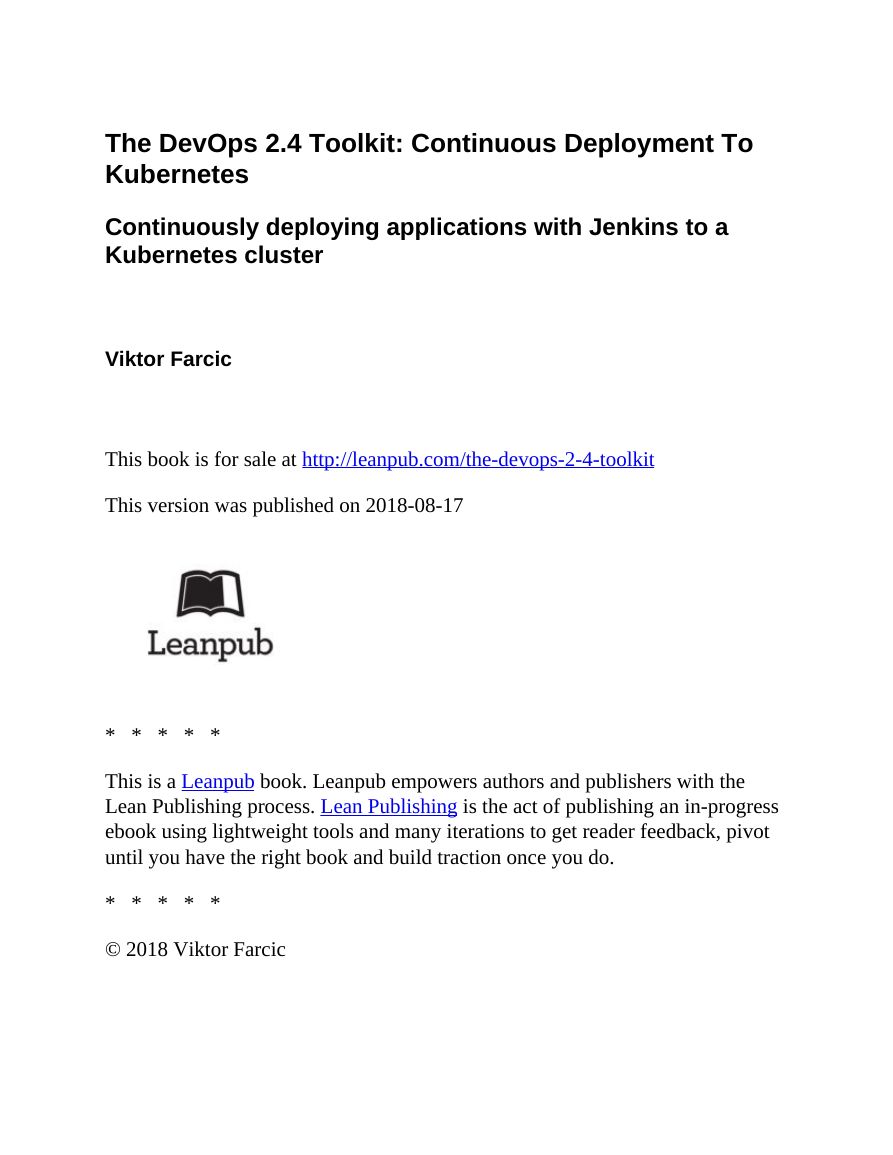
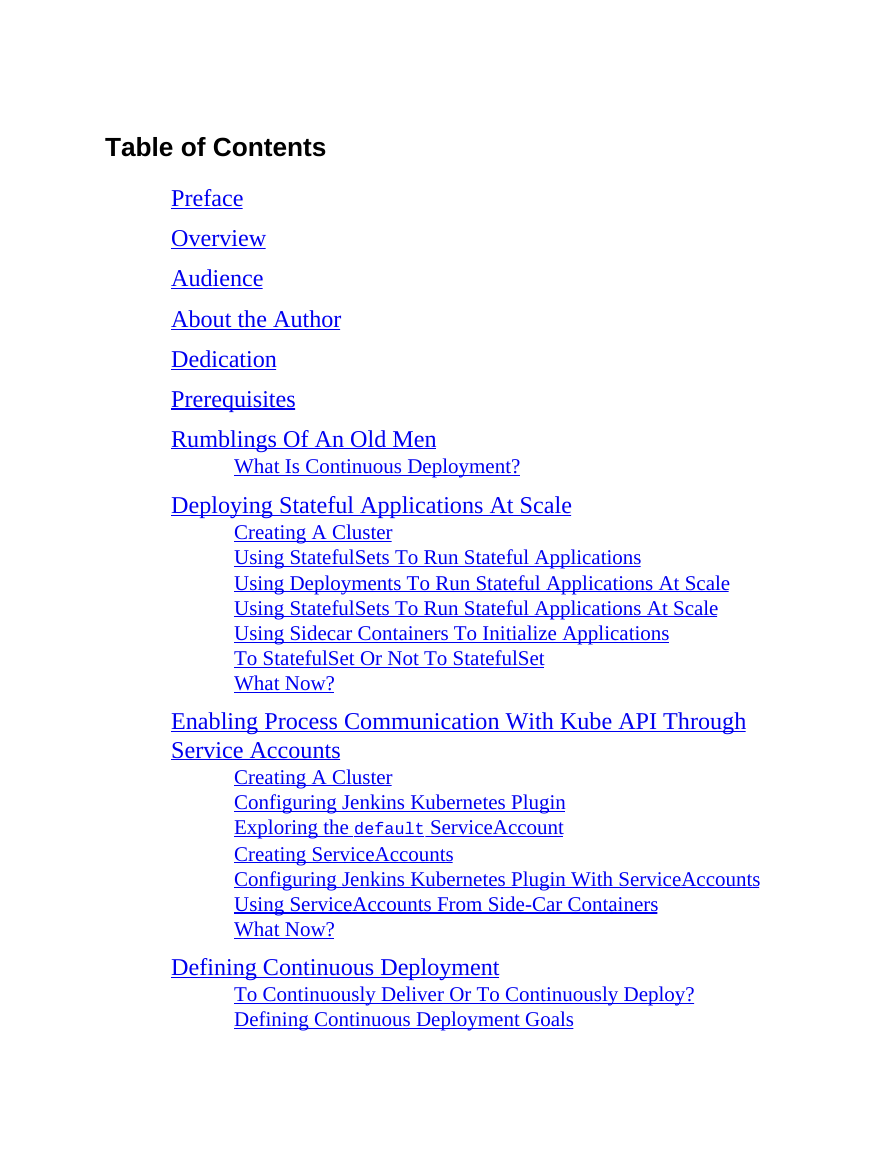


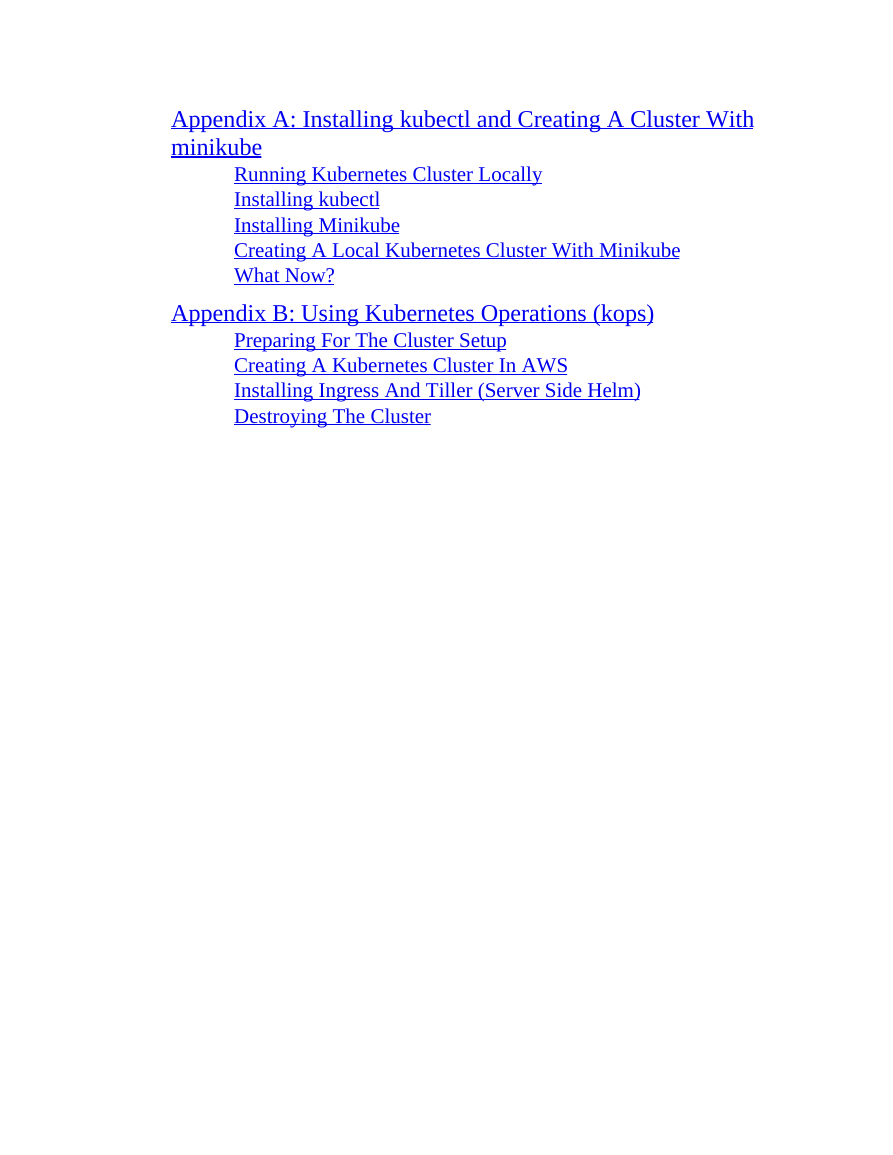
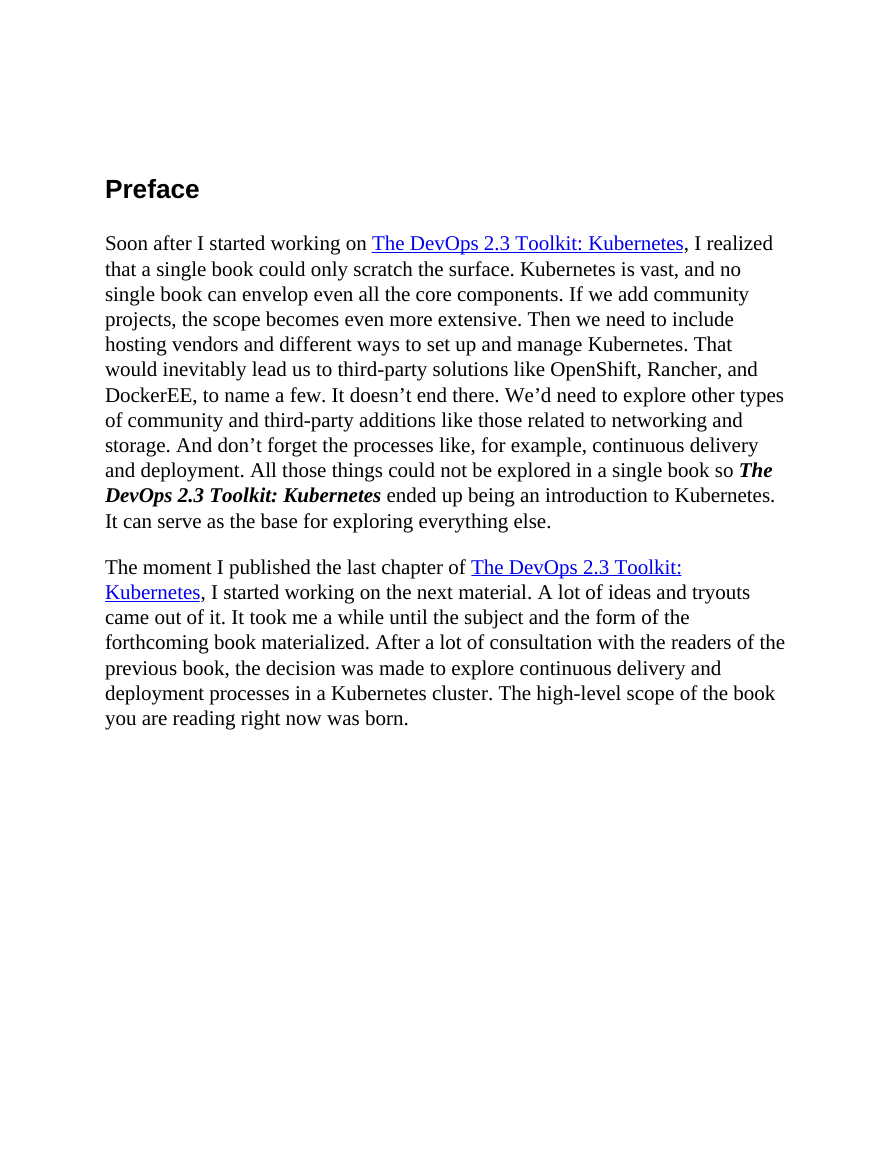
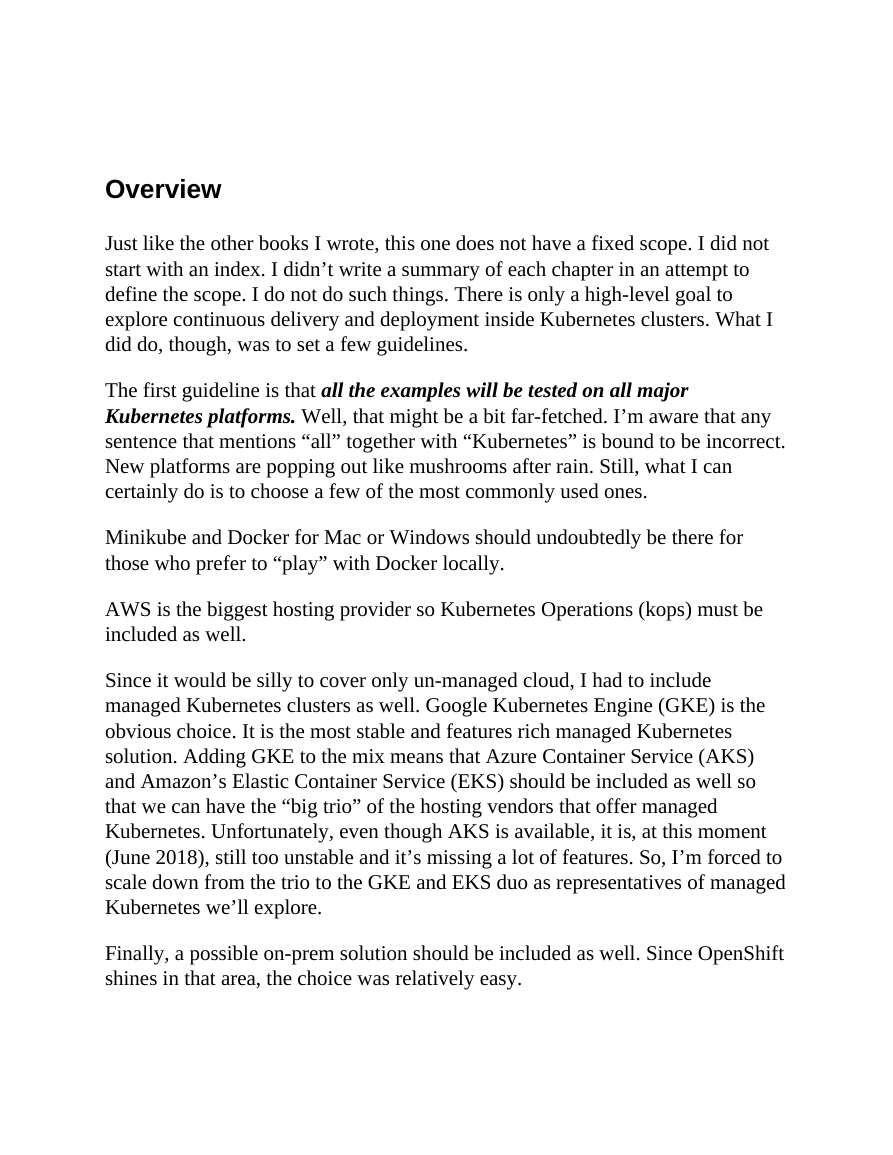








 2023年江西萍乡中考道德与法治真题及答案.doc
2023年江西萍乡中考道德与法治真题及答案.doc 2012年重庆南川中考生物真题及答案.doc
2012年重庆南川中考生物真题及答案.doc 2013年江西师范大学地理学综合及文艺理论基础考研真题.doc
2013年江西师范大学地理学综合及文艺理论基础考研真题.doc 2020年四川甘孜小升初语文真题及答案I卷.doc
2020年四川甘孜小升初语文真题及答案I卷.doc 2020年注册岩土工程师专业基础考试真题及答案.doc
2020年注册岩土工程师专业基础考试真题及答案.doc 2023-2024学年福建省厦门市九年级上学期数学月考试题及答案.doc
2023-2024学年福建省厦门市九年级上学期数学月考试题及答案.doc 2021-2022学年辽宁省沈阳市大东区九年级上学期语文期末试题及答案.doc
2021-2022学年辽宁省沈阳市大东区九年级上学期语文期末试题及答案.doc 2022-2023学年北京东城区初三第一学期物理期末试卷及答案.doc
2022-2023学年北京东城区初三第一学期物理期末试卷及答案.doc 2018上半年江西教师资格初中地理学科知识与教学能力真题及答案.doc
2018上半年江西教师资格初中地理学科知识与教学能力真题及答案.doc 2012年河北国家公务员申论考试真题及答案-省级.doc
2012年河北国家公务员申论考试真题及答案-省级.doc 2020-2021学年江苏省扬州市江都区邵樊片九年级上学期数学第一次质量检测试题及答案.doc
2020-2021学年江苏省扬州市江都区邵樊片九年级上学期数学第一次质量检测试题及答案.doc 2022下半年黑龙江教师资格证中学综合素质真题及答案.doc
2022下半年黑龙江教师资格证中学综合素质真题及答案.doc